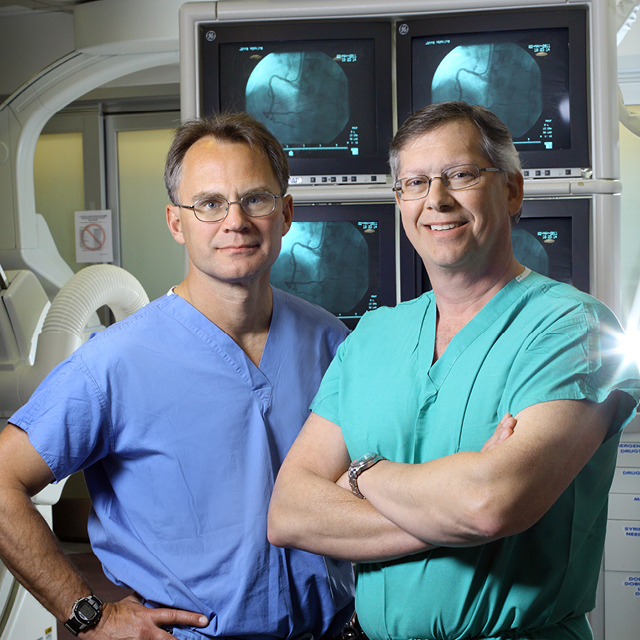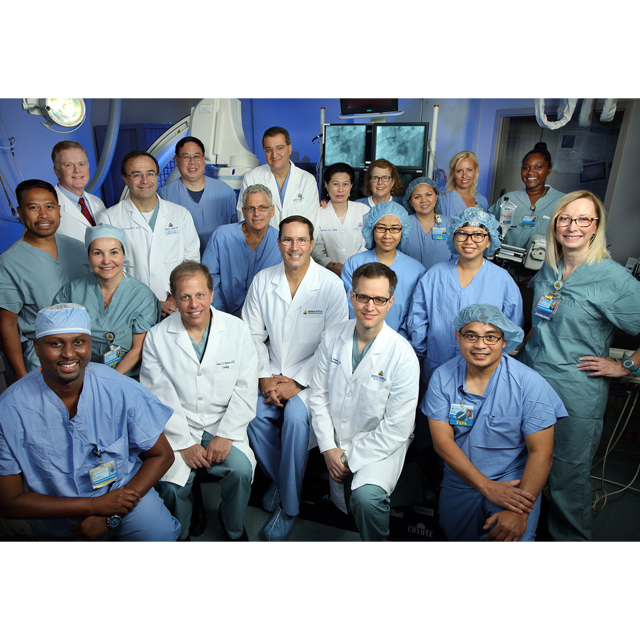James Owings thought he would need open heart surgery to replace his dangerously deteriorated heart valve. Instead, the active 77-year-old qualified for a minimally invasive procedure known as TAVR (transcatheter aortic valve replacement).
“I went into Suburban Hospital at 6:30 on a Wednesday morning, had the surgery, and went home early Thursday afternoon,” says the Rockville, Maryland, business owner.
TAVR was developed about 20 years ago as a minimally invasive alternative to surgery for patients with faulty heart valves. Until recently, it was limited to those who, for age and health reasons, were considered poor candidates for open heart surgery.
In August 2019, the Food and Drug Administration (FDA) updated its guidance to allow TAVR for patients such as Owings who are not a particular surgery risk.
Suburban was part of a multisite trial that contributed to the 2019 change in FDA guidance. The trial, which looked at low risk patients a year after their procedures, found no difference in outcomes between those who had valve replacements through surgery and those who had TAVR.
“My wife, Janet, is the one who found out about TAVR. Because I’m in pretty good shape, I only recently became eligible for it,” says Owings, who hikes, fishes, and exercises twice per week with a personal trainer.
Surgical aortic valve replacement, known as SAVR, traditionally requires opening the sternum and the heart, and sewing in a new valve to replace a diseased one.
Recently Suburban Hospital has developed a program of minimally invasive valve surgery for some patients, where a 3-inch incision is made without opening the sternum. Recovery is shorter and patients return to activity in two weeks.
Either way, patients are fully anesthetized and placed on a heart-lung machine during the operation. They usually remain in the hospital for four or five days after surgery, and full recovery takes months.
TAVR, on the other hand, requires just one night of hospitalization and recovery is almost immediate, says Gregory Kumkumian, M.D., medical director of the cardiac catheterization laboratory at Suburban.
The multidisciplinary TAVR procedure requires both a surgeon and an interventional cardiologist. Patients are sedated but do not require full general anesthesia, which can be riskier, especially for older people. The interventional cardiologist inserts a catheter through the femoral artery and uses it to guide a man-made replacement valve through the damaged one. Once the valve is in place, it inflates and the catheter is removed.
“TAVR offers an effective treatment for patients who would not have been a candidate for any treatment,” says Kumkumian. “It’s also a new choice for those who would have had surgery as an option. Think of all the prolonged recovery and risk that people can avoid.”
Aortic stenosis — calcification and deterioration of the valves that control blood flow from the heart to the body — develops over time and is most common in people age 80 or older, says Eric Lieberman, M.D., a cardiologist with the Suburban Hospital Structural Heart Disease Program. “It’s easy to diagnose with an echocardiogram,” he says.
Symptoms, which tend to become more severe over time, include shortness of breath, chest discomfort, lightheadedness and fainting. The only known treatment is valve replacement.
Owings learned of the problem with his heart valve in late December, as he prepared to undergo atrial fibrillation ablation for a related problem: a persistent heart flutter. Doctors at a Virginia hospital told him that he needed the valve replacement instead. He chose Suburban Hospital because of its experience with the procedure.
The Johns Hopkins Hospital in Baltimore has long been home to one of the busiest TAVR programs in Maryland, and one of the largest on the East Coast. In 2017, the structural heart disease team at Johns Hopkins launched TAVR services at Suburban Hospital.
The Johns Hopkins TAVR team at Suburban Hospital includes Rani Hasan, M.D., M.H.S., medical director of the regional structural heart program; Thomas Matthew, M.D., M.S., director of the cardiothoracic surgery program; Fayyaz Hashmi, M.B.B.S.; Kumkumian and Lieberman.
The team evaluates potential TAVR recipients and makes treatment recommendations through a collaborative process that involves both interventional cardiologists and cardiac surgeons.
Owings, who was experiencing severe shortness of breath before the Jan. 6 procedure, says the symptom has since disappeared. “Anyone having the TAVR surgery can expect to feel better,” he says.
“The doctors told me I could go back to walking right away, but advised me to hold off on working out with the trainer for one week,” Owings says. “A week later, I had a follow-up and they said you’re fine, do whatever you want to do. I’m back to doing everything I did before.”


